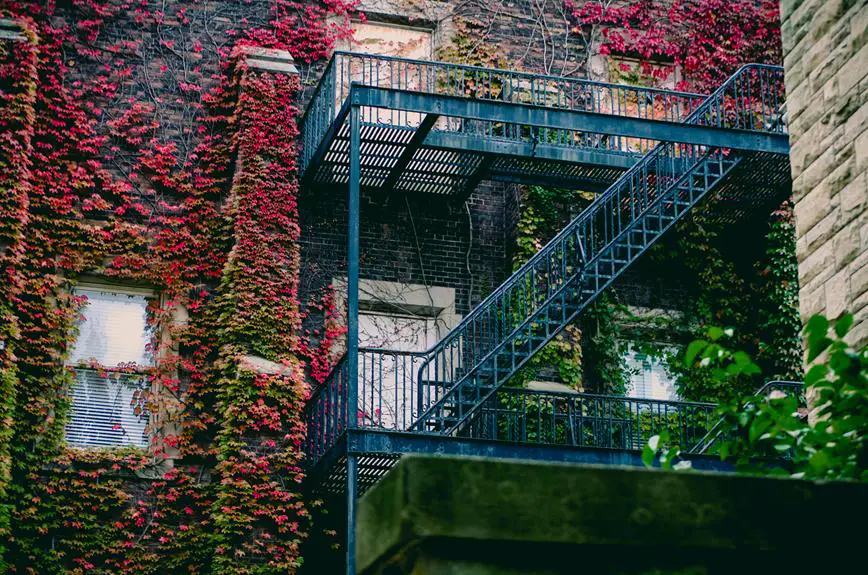You can bring organic gardening into your small apartment with the right essentials. Start by choosing space-efficient, eco-friendly containers with drainage holes to prevent waterlogged soil. Select a container-friendly, organic soil mix with natural ingredients like peat moss and perlite. Then, pick low-maintenance plants like Chinese Evergreen or Pothos that thrive in low-light conditions. Be prepared to tackle common problems like overwatering and pests, and get creative with space-maximizing techniques like wall-mounted planters and hanging baskets. With these essentials, you’ll be well on your way to growing your own organic oasis – and there’s more to discover.
Choosing the Right Containers
As an apartment dweller, you’ll want to choose containers that are space-efficient, durable, and eco-friendly. Look for containers made from sustainable materials like recycled plastic, wood, or ceramic. Avoid containers with chemical treatments or coatings that can leach into the soil.
Consider the size and depth of your containers based on the type of plants you want to grow. For example, if you’re growing leafy greens, shallow containers with good drainage will work well. If you’re growing vining plants like tomatoes, look for containers with built-in trellises or supports.
Make sure your containers have drainage holes to prevent waterlogged soil. You can also add a layer of small rocks or broken pottery at the bottom of the container to improve drainage.
Selecting the Best Soil Mix
You’ll want to choose a soil mix that’s specifically formulated for containers and organic gardening, as it will retain moisture but drain excess water effectively.
This is essential, as you don’t want your plants to drown in waterlogged soil or shrivel up from dehydration. Look for a mix that’s labeled ‘container-friendly‘ or ‘organic’ – it should contain a blend of natural ingredients like peat moss, vermiculite, and perlite.
These ingredients will provide good drainage, aeration, and water-holding capacity.
When selecting a soil mix, also consider the nutrient content. Opt for a mix that’s fortified with organic matter like compost or worm castings, which will provide slow-release nutrients to your plants.
Avoid mixes with synthetic fertilizers, as they can harm the environment and your plants’ health.
Lastly, check the pH level of the soil mix. Most plants thrive in a slightly acidic to neutral soil pH, between 6.0 and 7.0.
Top Plants for Indoor Growing
As you prepare to bring some greenery into your indoor space, consider starting with plants that thrive in containers and can tolerate low-light conditions, such as Chinese Evergreen or Pothos.
These low-maintenance plants are perfect for small apartments and can purify the air while adding a touch of natural beauty to your space.
Another great option is the Snake Plant, also known as Mother-in-Law’s Tongue, which can survive with minimal light and infrequent watering.
If you’re looking for something a bit more vibrant, consider the Peperomia, which comes in a variety of colors and patterns.
It prefers high humidity, making it a great choice for bathrooms or kitchens.
If you’re new to indoor gardening, you can’t go wrong with the ZZ Plant, which is virtually indestructible and can tolerate a range of lighting conditions.
Whatever plant you choose, make sure to choose a container that complements your space and provides good drainage.
With a little care and attention, you’ll be enjoying the benefits of indoor gardening in no time!
Common Problems and Solutions
Even with the best care, indoor plants can still encounter problems, and you must know how to identify and fix common issues to keep your plants thriving.
One common problem is overwatering, which can lead to root rot and kill your plants. To avoid this, check the soil moisture by sticking your finger into the soil up to the first knuckle. If it feels dry, it’s time to water.
Another issue is pests, like spider mites, mealybugs, and aphids. Inspect your plants regularly for signs of infestation, such as white powdery residue or tiny moving dots. If you notice any, isolate the affected plant, and treat it with neem oil or insecticidal soap.
You might also encounter fungal diseases, which can cause black spots or powdery mildew. To prevent these, promote good air circulation around your plants and remove any infected leaves. If the problem persists, treat the plant with a fungicide.
Creative Space Maximization
By creatively arranging your indoor garden, you can turn even the smallest spaces into thriving oases.
Think vertically by using wall-mounted planters, trellises, or a living wall to maximize your space. This won’t only add a decorative touch but also increase the growing area for your plants.
Consider using hanging baskets or macramé planters to add a bohemian touch while keeping your floors and surfaces clear.
Make the most of corners by placing smaller plants or herbs on corner shelves or in tiered planters. Utilize the space under your windows by placing plants on window sills or using window boxes.
Don’t forget about the ceiling! Suspend plants from the ceiling or use a pulley system to add more greenery to your space.
Remember to choose plants that thrive in indoor conditions and don’t require a lot of direct sunlight. With a little creativity, you can turn even the smallest apartment into a lush oasis that brings you joy and fresh air.

Erzsebet Frey (Eli Frey) is an ecologist and online entrepreneur with a Master of Science in Ecology from the University of Belgrade. Originally from Serbia, she has lived in Sri Lanka since 2017. Eli has worked internationally in countries like Oman, Brazil, Germany, and Sri Lanka. In 2018, she expanded into SEO and blogging, completing courses from UC Davis and Edinburgh. Eli has founded multiple websites focused on biology, ecology, environmental science, sustainable and simple living, and outdoor activities. She enjoys creating nature and simple living videos on YouTube and participates in speleology, diving, and hiking.

